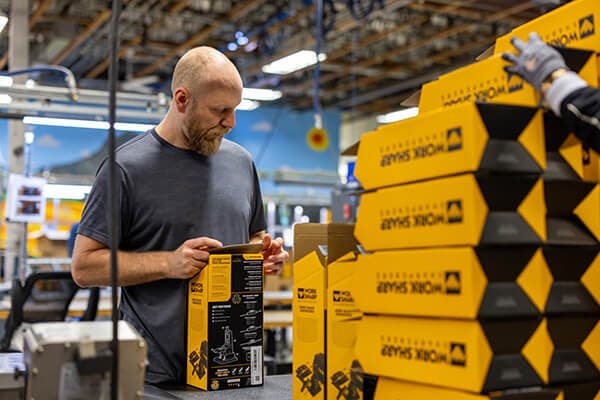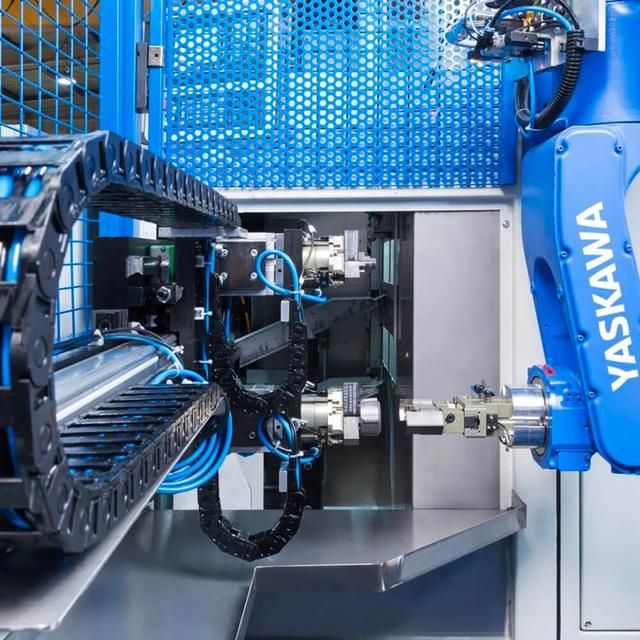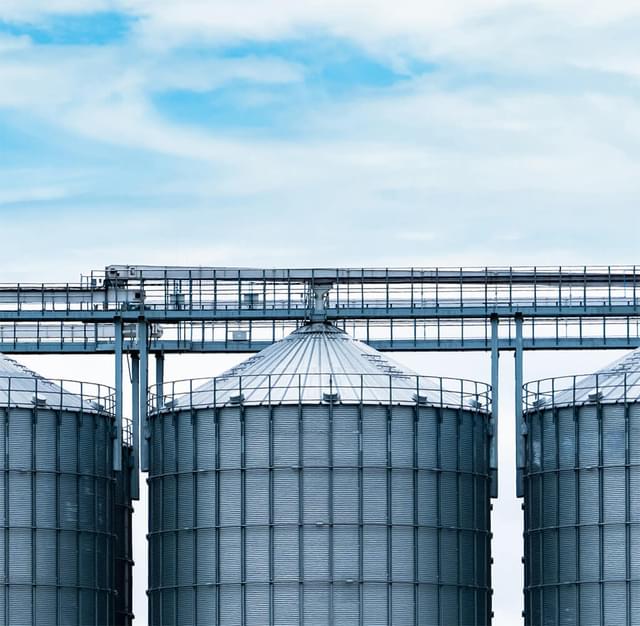
Manufacturing
By Use Case
By Industry
By Standard

Global
Manufacturing
Enterprise

Benefits of Yaskawa’s BarTender deployment:
Yaskawa Electric Co., Ltd., founded in 1915, develops and produces cutting edge technologies for the manufacturing industry, such as motion control, robotics and power conversion. Yaskawa created the world’s first general purpose transistor inverters in the 1970s — the company now ranks as the top manufacturer of inverter products by global market share, with production bases in Japan, the United States, Europe, China and India.
Yaskawa uses BarTender to automate the printing of barcode labels on its production lines. The company has introduced this automated system across several of its global manufacturing sites, capturing operational efficiencies and improved traceability throughout its supply chain.
Using BarTender’s Intelligent Templates™, it takes only a handful of template files to create the thousands of different labels Yaskawa requires.
“Our core products, including the A1000 and V1000 drives, are manufactured across twelve production lines and shipped globally from our inverter factory in Yukuhashi, Japan,” said Mr. Yoshinobu Murakami, section manager of the plant’s production engineering division. “We affix a barcoded label to every product, containing information such as traceability data, and we have been using barcode software from early on.”
Each product features two labels — one on the faceplate of the product and one on its packaging. Labels differ in both size and data included, depending on the product.
But barcode label management had not been coordinated with the production line, instead, performed manually: labels were pre-printed offline, pasted on the product and then checked individually. Human error was an inevitable problem.
And Yaskawa was managing a huge number of labels. The company’s existing practice of storing data in the static labels themselves instead of in a central database led to proliferation of label files, requiring increased resources for data storage and management
Many of the products produced at the Yukuhashi inverter factory are shipped overseas, requiring different sets of labeling for each item, in Japanese, English and Chinese, depending on the item’s shipto address.
Automating production lines — including a review of labeling processes — became part of the company’s continuous improvement program.
“Our company is opening a next-generation ‘solution factory’ located in Iruma-shi, Saitama Prefecture, Japan that employs Internet of Things (IoT) and Artificial Intelligence (AI) technologies,” Mr. Murakami said. “The new facility is production line is completely automated, including labeling integrated with production processes. We see this as an important step in our evolution to ‘Yaskawa Industries 4.0.’”
The company’s existing practice of storing data in the static labels themselves instead of in a central database led to proliferation of label files, requiring increased resources for data storage and management. Using BarTender’s Intelligent Templates™, Yaskawa is now able to populate labels from data stored in a central database, using dynamic data fields in the label file.
“Before the introduction of BarTender, we created an individual label file for every different data point that appeared on a label, so there were a huge number of files for us to manage,” said Mr. Toshinobu Fujiwara of Yaskawa’s Production Engineering Division, Inverter Plant Engineering Division, and the Inverter Division. “Any time there was a change to the information, all the labels had to be updated by hand. With only two or three supervisors having access to the complex label editing process, this caused slowdowns in production.”
Now, using BarTender’s Intelligent Templates™, it takes only a handful of template files to create the thousands of different labels Yaskawa requires. The print operator chooses from a selection of existing product information using an electronic form, a simple, graphical interface. One action — job number, barcode scan, or alphanumeric key entry, gathers approved product and shipping data from various databases, populates the label, and sends the print job to any of several different printer types, sizes and brands at any of the company’s online facilities. The entry of one job number will typically produce two to four different labels, on up to four different printing devices.
Because only a small number of templates are required to print thousands of different labels, and since the operator creates the label out of existing product information through a forms-based point-and-click interface, the process is simple and secure.
Each product requires several labels: labels that contain information including the product model number and input/output voltage, a “face label” that is stuck on the faceplate of the product, and a packaging label. Each product’s collection of labels are aggregated into one master file, simplifying data management and access, and streamlining the labeling process.
“The best thing about BarTender is that the automated printing of labels can be linked to the production line without being subject to printer selection restrictions,” said Mr. Fujiwara. “Being able to quickly produce and ship products one of the things that sets Yaskawa apart from our competitors. BarTender is able to manage label information centrally, and automates processes which were handled manually in the past.”
“The label is automatically produced from the printer based on the product ID — the production line worker simply holds the product’s RFID tag over the reader,” said Mr. Yoshinobu Murakani, section manager of the Inverter Plant Production Engineering division. “This has reduced human error. There are as many as 60 printers installed in 12 production lines, so this has had a great impact from a management viewpoint as well.”
Administrative load is reduced. “Using BarTender’s Layers function means that there are almost no custom-coded scripts being used,” said Mr. Fujiwara. “Now the formats can be managed with no programming skills required. This has allowed us to streamline the label management process.”
A stronger global supply chain
Yaskawa has rolled out BarTender at facilities in the US, Europe, China and India. Standardizing labeling processes globally has allowed the company to capture new supply chain efficiencies. “The multilingual capabilities of BarTender have played a big role in the success of our new labeling program,” said Mr. Murakami. “Many of the products produced at the Yukuhashi inverter factory are shipped overseas. We store different language layers — Japanese, English and Chinese — in separate layers. We manage label language by ship-to address, which has great implications for ensuring production control and traceability within global supplychains as a whole.”
BarTender’s world-class technical support adds to value to Yaskawa’s investment in the software. “BarTender provides peace of mind, said Mr. Fujiwara. “Whenever there is an issue, BarTender’s support team always solves it quickly,” helping keep the company’s production lines up and running.

Manufacturing

Label System Management

Supply Chain
